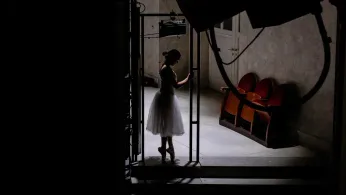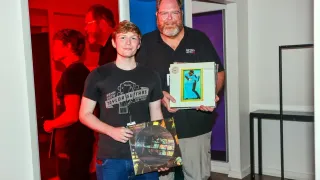
Dec 27
Soprano Asmik Grigorian to Lead 'Carmen' and Sing Mezzo-Soprano Role This Summer
Ronald Blum READ TIME: 3 MIN.
Asmik Grigorian is reaching a new low — in a positive way — and doing it on one of the world’s top stages.
A star soprano, she will sing the title role next summer in Georges Bizet’s “Carmen,” a mezzo-soprano touchstone, at the Salzburg Festival.
“I thought if I want to do ‘Carmen’ I need to do it now because I don’t want to do when I will be 54,” the 44-year-old Grigorian said ahead of a concert this weekend at New York's Carnegie Hall.
Maria Callas, Leontyne Price, Jessye Norman and Angela Gheorghiu all recorded Carmen but never sang the complete role on stage.
Ana María Martinez and Danielle de Niese are the most notable sopranos in recent years to have sung live performances of the famous seductress, while Victoria de los Ángeles took it on late in her career in the 1970s, and Geraldine Farrar and Rosa Ponselle performed it decades earlier.
Grigorian is to sing eight “Carmen” performances starting July 26 in a new production by Gabriela Carrizo with Jonathan Tetelman as Don José, Kristina Mkhitaryan as Micaëla, with Teodor Currentzis conducting the Utopia Orchestra.
“I would not bet against her,” Metropolitan Opera's general manager Peter Gelb said. “She’s very much of a kind of old-school singer. She’s kind of fearless when it comes to taking on new repertoire.”
Grigorian will be singing at Carnegie Hall on Saturday alongside Thomas Hampson, Sondra Radvanovsky, Nadine Sierra, Brian Jagde and Anita Monserrat, an unusually timed performance during a period when peripatetic singers often are home for the holidays. She is to join Hampson in the final scene from Pyotr Tchaikovsky’s “Eugene Onegin,” an opera she is to perform at the Met starting April 20.
Promoter Eugene Wintour, arranging his first U.S. event, wanted to pair stars who hadn't sung together before. Advance ticket sales at Carnegie were slow, and Wintour said he is planning another star-filled concert next year but before the holidays.
“In Europe, Christmas and New Year’s concerts are sold out instantly," he said through a translator. “It’s a learning curve working here in the states.”
Grigorian traveled Friday from Vilnius, Lithuania; to Zurich and then to New York, going straight from JFK International Airport to a rehearsal at Riverside Church.
“I really promised myself that I’m not going to be away during Christmas because it’s the only day when all the family, we kind of collect ourselves to be in one place and this is a very, very important day for me,” she said.
A daughter of tenor Gegham Grigorian, she made her opera debut in 2004 as Donna Anna in Mozart’s “Don Giovanni” in Norway and has since become one of the world’s leading dramatic sopranos. Her current season includes the title roles in Giacomo Puccini’s “Turandot” and “Manon Lescaut,” and in Richard Strauss’ “Salome,” and she has tentatively planned Richard Wagner's “Tristan und Isolde” for the first time at the Vienna State Opera in 2029.
While she has sung Micaëla, Carmen has a lower tessitura and breaking vocal fach boundaries can spark controversy. When Ponselle headlined “Carmen” at the Met for the first time in 1935, Olin Downes wrote in The New York Times: “We have never heard Miss Ponselle sing so badly.”
“If you feel that you have the notes and you have the personality and you have the desire and you’re a star like Asmik or you’re a star like Ana María Martínez and a theater will give it to you, hallelujah,” soprano Lisette Oropesa said.
Martínez made her debut as Carmen in 2014 at the Houston Grand Opera at the behest of Anthony Freud, the company's general director from 2006-11.
“The most intimidating aspect of ‘Carmen’ is nothing vocal. ... It’s much more about commanding the stage." Martínez said. "Asmik is going to just be incredible in the role simply because of her presence on stage and her magnetism.”
Grigorian's first performance as Carmen is expected to draw considerable attention in the classical music world.
"I started to live that role day by day a bit,” she said. “I never know if I can sing something before I start to do it, so maybe it will be my failure? Who knows? Let’s see.”






